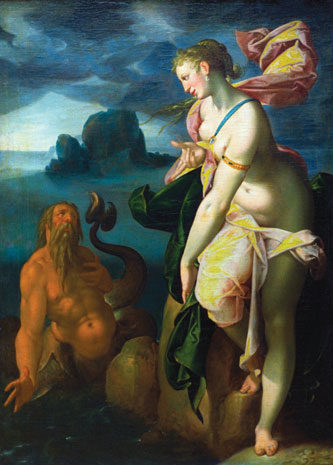English: Metamorphoses
The Roman poet Ovid is best known for Metamorphoses, an epic poem of 15 books, in which he seeks to recount the history of the world and of human civilization through the use of Greek and Roman mythology, starting at the beginning of the world and ending with the death of Julius Caesar in 44 BCE and the accession of Augustus. Analysis of this epic poem and of the poet’s characters lies at the center of research by Barbara Pavlock.
Professor of English and director of Lehigh’s Classical Studies program, Pavlock explores issues central to Ovid’s poetics—the status of images, generation of plots, repetition of themes, opposition between epic and other genres, trustworthiness of the narrative voice and the interrelation of rhetoric and poetry. She is the author of The Image of the Poet in Ovid’s Metamorphoses, one of Choice Magazine’s outstanding academic books in 2009, and her recent work is shedding light on ancient writers’ interests in etymologizing names.
In Metamorphoses, Ovid explains the nature of gods and goddesses, the creation of the human race, the interactions between gods and humans, and some major events, such as the Trojan War and the founding of Rome. Pavlock has been shedding new light on the poem’s intricacies. Her book revealed how Ovid played with the nature of characters, giving them unexpected twists often by the meaning of their names, and in a recent invited lecture at Rice University, Pavlock noted that one episode involves Scylla. Scylla was in love with Minos, the Cretan king of a besieging army, and betrayed her city to him, but he spurned her. Pavlock notes there are two Scyllas; one metamorphosed into a sea bird, the other into a sea monster. The sea monster had dogs coming out of her waist, and her voice was likened to the yelping of dogs. A word for dog, the root word from which Scylla is derived, has negative connotations in ancient Greek literature, Pavlock notes, which Ovid used in this episode to comment symbolically on Roman society. Ovid alludes to the mythical figures Ariadne and Phaedra, daughters of King Minos, to comment on Roman social issues and to criticize Augustus. Understanding Ovid’s use of etymology is essential to interpreting Ovid’s work, says Pavlock.
“Roman authors were very interested in etymology. Writers in the late Republic and early Empire were concerned with connecting the meaning and roots of words with character traits. If you read the poem just in English, you get the themes and know what is going on, but not all the levels are operative in the original language.”
“It’s interesting that Ovid would have this Scylla fall in love with Minos, the famous ruler of a major sea empire in remote antiquity, who is meant to be an analog for Augustus. The emperor Augustus himself had a problematic daughter and granddaughter. Augustus banished both of them, but the granddaughter was exiled, interestingly, at about the same time Ovid published Metamorphoses and was exiled himself. Augustus even banned his books from the libraries of Rome, presumably because he took offense at Ovid’s erotic poetry.”
Posted on:


